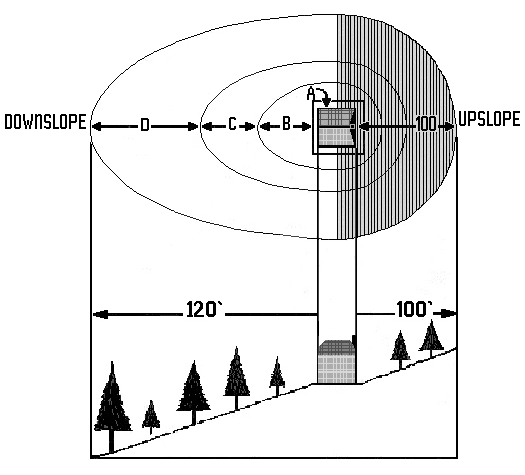The national database of state and local wildfire hazard mitigation programs
serves as a clearinghouse of information about nonfederal policies and
programs that seek to reduce the risk of loss of life and property through
the reduction of hazardous fuels on private lands. If
you would like to submit a program to the national wildfire programs database,
please complete the following form (MS
Word).
Return to your search results or Perform a new search
|
Title: |
Montana Fire Protection Guidelines for Wildland Residential Interface Development
|
|
Type: |
Regulatory
Education
|
|
Jurisdiction: |
State
|
|
State: |
Montana
|
|
Program Description: |
The Montana Fire Protection Guidelines for Wildland Residential Interface Development were developed in 1993, in response to House Joint Resolution 36 of 1991, which called for minimum planning criteria for residential development in the Wildland Residential Interface.
Adoption by Counties
The guidelines were created as voluntary, but are recommended to be adopted by local government units. Language from the Guidelines has been adopted by many counties including Flathead, Missoula, Gallatin, Lewis & Clark, and Fergus counties.
The Guidelines contain recommendations for vegetation management around homes and roadways, specification of road widths for emergency vehicle access, recommendations for fuel breaks around subdivisions, discussion of water storage and supply needs for fire fighting, roof and building construction specifications, recommendations for road signs, and utilities.
Fire Protection Guidelines for Wildland/Residential Interface Development (DNRC, 1993)
The guidelines are specific, and set out separate guidelines for houses on 1%-10% slope, 10% to 20% slope, and 20% -30% slope. When the slope increases, the distances for fuel reduction: the 10 foot, 20 foot and 70 foot guidelines for spacing and pruning of vegetation, expand on the downslope side of the building. This is because fire spreads quickly when moving uphill. The building needs greater protection from fire moving uphill.
The guidelines call for non-combustible material, such as gravel, flowers, plants, concrete, or mineral soil in the first 3 feet around a building. Moving farther out in concentric rings, all trees and downed woody materials should be removed in the next ten feet. From 13 feet out to 30 feet, trees should be thinned to ten feet between crowns, limbs should be pruned up to 15 feet or 1/3 the total live crown height, and surface vegetation should be maintained at 3 inches or less. All downed woody fuels should be removed. From 30 feet to 100 feet out from the building, trees should be thinned to 10 feet between crowns, limbs should be pruned to 15 feet or 1/3 total live crown height, and all woody fuels more than 3 inches in diameter should be removed.
In areas of 10%-20% slope, the above guidelines still apply for the upslope side of the building. But on the downslope side, the total area for modification increases to 120 feet from the building. In areas of more than 20% slope, the downslope side requires fuel modification out to 150 feet from the building. The expansion of area of fuel modification on the downslope side is necessary in areas of greater slope.
The Guidelines also state, "Trees, brush and dense undergrowth are the primary fire hazards. This vegetation can ignite readily, burn with intense heat, and promote rapid spread of fire. Vegetation must be managed so as to reduce exposure of structures to flames and radiant heat during a wildfire. The reduction of flammable vegetation and other hazards around buildings provides a 'defensible space' for firefighters and residents." As a minimum, developers and landowners should:
Create defensible spaces by:
a. Determining the slope of the building site.
b. Reduce and remove vegetation around each building according to the slope. Single ornamental trees or shrubs need not be removed as long as all vegetation near them is reduced according to the guideline. Ornamental trees and shrubs should not touch any buildings.
c. When planting, the property owner shall select trees, shrubs, and vegetation that limit or retard fire spread as suggested below:
(i) Perennial: Choose hardy perennial flowers that are adapted to our climate. These green, leafy, succulent plants are difficult to burn. Watering and regular weeding improves fire resistance.
(ii) Shrubs: Evergreen shrubs such as dwarf conifers or junipers tend to ignite easily; avoid them unless well spaced.
(iii) Trees: Deciduous trees can be clumped, scattered, or planted in greenbelts or windbreak patterns. Evergreen trees tend to ignite easily and should be spaced in accordance with the landscaping guidelines.
Contact Information
For more information contact Mike Kopitzke or 406.542.4250.
|
|
Images: |
|
1. | 
|
|
|
|
|


